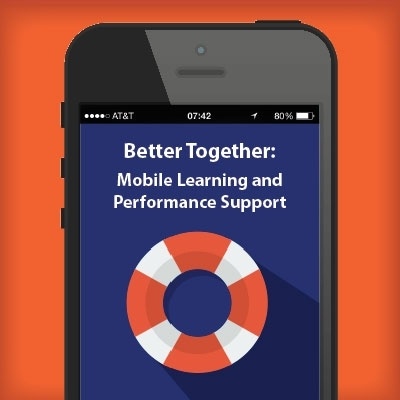Why Mobile Learning Drives Performance And Builds A Future-Ready Workforce
Hundreds of millions of companies, representing nearly half of all businesses worldwide, have incorporated mobile learning into their training and development programs as of 2025. Mobile-based solutions have been adopted due to increased accessibility, remote work, and continuous upskilling needs.
While a significant portion of corporate eLearning still occurs on desktops and laptops, mobile learning is surging. Desktops remain the primary device for more complex training and longer learning modules. Mobile learning is rapidly increasing in corporate contexts, with widespread adoption of mobile-first strategies.
The rise of mobile learning is not happening in isolation; it is just one piece of the puzzle. Several other trends are shaping the learning landscape as well. Here is the deep dive into these trends.
Broad Shifts
Let's map the broad shifts that fueled the growth of mobile learning.
Remote/Hybrid Work Setup
According to a Statista report, 28% of employees worldwide were working remotely in 2023, up from 20% in 2020. Post-COVID, more companies have adopted hybrid work models. LinkedIn's 2024 report, Global State of Remote and Hybrid Work, highlights that hybrid work has become the new normal, as organizations strive to balance on-site collaboration with employee flexibility through a blend of on-site, field, and remote work.
Continuous Learning
The business terrain has become incredibly competitive. Changing customer demands and evolving technology have put companies on edge. Businesses need to innovate every moment to stay ahead of the curve. This has led to rapid adjustments in skill requirements.
The shelf life of skills is shortening, and employees need to upskill and reskill continuously.
eLearning
Adult learners prefer flexibility to access training anytime and on any device, making eLearning a critical component of modern training programs. Most of them prefer to use a mobile device to complete the online courses at their convenience.
eLearning plays a vital role due to the hybrid work setup and the need for continuous learning. The hybrid work models and the growing need for continuous learning have made eLearning indispensable for engaging and upskilling the workforce.
Shorter Learning Courses
Traditional classrooms and long-duration courses often failed to engage learners and delivered subpar ROI to companies. In response, organizations shifted to creating standalone, shorter courses that revolve around one learning objective. These courses can be punctuated between the busy schedules of employees.
Mobile learning has since become a potent tool to deliver bite‑sized courses at the moment of need, enabling continuous learning and helping companies remain competitive.
Responsive Design
In the meantime, eLearning courses gained multidevice compatibility through responsive design. This allows one design to reflow into a display of any device, providing optimized learning interactions. Viewing courses across devices creates higher engagement and a better learning experience.
Scenarios
Let's look at a few scenarios where mobile learning helped improve learning outcomes.
A global sportswear company had to keep both internal staff and external retail partners up to date on frequently changing product lines. It rolled out mobile-first microlessons for internal employees and retail partners. The courses covered both product knowledge and brand training. They could be completed on the go, during a break, while commuting, or in-store. This helped the company to scale its training across geographical boundaries, boosting confidence and performance in the field.
A global leader in financial services leveraged mobile learning to improve the speed and effectiveness of compliance training for its employees. As compared to the traditional methods, the time spent on training was reduced by almost half. There was an increase in completion rates and knowledge retention despite shorter sessions.
A financial institution launched a mobile learning program for financial specialists. The busy professionals could access the program anywhere and anytime. Employees learned at their own pace, boosting completion rates and overall workforce efficiency.
A food delivery company significantly increased attendance at training activities and the completion rate after incorporating short eLearning (mobile-accessible) along with in-person training.
Use Cases
In addition to eLearning courses, job aids, how‑to clips, checklists, micro‑nudges, and short quizzes can fit daily rhythms (commutes, breaks, and between calls). Here are some examples of use cases:
- Frontline employees can scan a QR code on equipment for a 90‑second troubleshooting clip.
- Workers in the field (operations, retail, delivery) can quickly access SOPs as tappable checklists.
- Customer success and sales teams can go through short refreshers before meetings or get quick practice prompts and objection‑handling cards.
- Technicians and engineers can be guided by AR‑assisted steps on the phone.
- Their job ticket types can be tied to safety micro‑refreshers.
- There can be micro-modules on any topic, including risk management and compliance.
- Memory boosters or follow-up courses can be added at particular intervals.
- Geotargeted updates related to local laws and so on can be facilitated on mobile.
Why Is Mobile Learning A Performance Multiplier?
The shift to mobile learning has improved engagement and learner satisfaction across industries worldwide.
Mobile learning offers increased accessibility, allowing learners to study anytime and anywhere. Its bite-sized, easy-to-understand content boosts engagement and is often delivered through interactive, game-based formats. This approach supports both individual and collaborative learning, leading to improved knowledge retention. There is faster diffusion of know‑how.
Mobile learning is the secret weapon because it makes training continuous, engaging, accessible, and measurable. It unlocks learning opportunities and supports organizations in adopting a flexible talent strategy to achieve future readiness and workforce agility.
Conclusion
The question for executives is no longer if but how quickly they can harness mobile learning to outpace competitors and build a high-performing workforce.
At Tesseract Learning, we leverage advanced technologies to help organizations meet the training needs of a global workforce. Our team of experts continuously innovates and reinvents its approaches to design, develop, and deliver better learning experiences. One of them is creating engaging mobile-first courses for any topic across all domains.
To learn more about our products and services and how we can help you, contact us.









